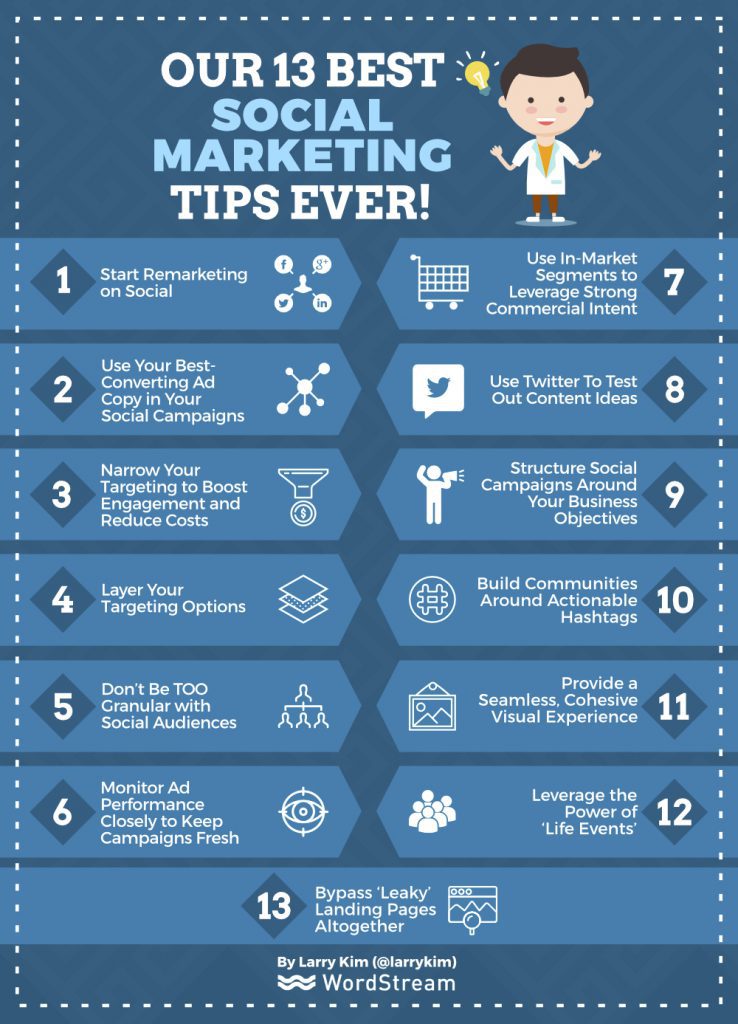
Content plays a vital role in SEO and social media marketing. This article will show you how to optimize Facebook profiles and use hashtags to increase engagement. You will also learn how to use Twitter to improve your SEO. Finally, learn how to use Google+ to promote social media. These strategies are easy to apply to your company and see if you like them. Let's start with the basics of SEO social marketing.
In seo social media marketing, content is key
Content is key in SEO social media advertising. Content is the king of SEO social media marketing. It can tell viewers about your brand and educate them on making smart buying decisions. A strong piece of content can make your brand stand out online and increase its authority in search engines. Here are some content marketing tips.
Optimized content drives conversions. Content that offers value to the audience will build brand loyalty, and encourage repeat sales. It will also increase brand loyalty. SEO will be more effective if the content is trustworthy. Customers will be happy! This is the ultimate goal. Your content will benefit from some uniqueness. Here are some tips to make sure your content is more attractive and engaging.

Optimizing profiles improves SEO
Search engine optimization requires that you optimize your social media profiles. The more search terms that your profile matches, the better it will show up in search results. Include descriptive keywords in your profile and link to relevant sites. Also, make sure that you optimize your images URLs for social media. Search engines will then link your social media profiles with your website to direct users to your pages. It is important to update your website regularly with new content and optimize for social media.
Search engine rankings play a significant role in social media signals. A user who likes or shares a post on his profile is more likely to link it. This means that by updating your content regularly, you will have a higher chance of getting your posts to show up on the first page of Google's search results. Your site's visibility will be increased by creating a high-quality profile.
Use hashtags to increase Facebook engagement
Hashtags are becoming a more common feature on social networks. They can be used to increase engagement by increasing your content's reach. To benefit your business, use hashtags strategically. They have numerous advantages. Even if your business is small, hashtags can increase your brand's visibility. Use hashtags to your advantage. Find the most trending hashtags in each industry and incorporate them into your regular posts. You can use a scheduling tool or schedule your posts so that hashtags are included in your posts.
To create buzz around your posts, use hashtags strategically and infrequently. Use hashtags for relevant content to be found and interacted with. #education can be used, for example, to identify a Facebook page that is dedicated to the design and publication of children's books. These hashtags will let your target audience know that you are a child, parent, or adult. Engage with your hashtags in your posts and in your comments.

Using Twitter for SEO
Twitter is your best choice for SEO and social media marketing. Google will index your posts using Twitter's search engine. Higher rankings are achieved by using more social signals. Twitter allows you to retweet pertinent tweets. This will increase visibility, drive traffic, and help with SEO. Here are some methods to optimize you profile.
Regularly tweet. Google reads tweets and recognizes brands who tweet often. Google loves active tweeters, so make sure to promote your site regularly. It's not possible for everyone to spend their day tweeting links to the site. To manage a business' social media, it takes time. But using Twitter correctly is a great way increase exposure.
FAQ
Why would you need a content strategy in marketing?
Content marketing does not mean creating high-quality content just for the sake. Content marketing is about connecting with people on an emotional level, helping solve their problems and building relationships. This requires an advanced understanding of how people interact online.
This is exactly the purpose of Content Marketing Strategy. A great Content Marketing Strategy helps you understand the psychology of customers so that you can best engage with them.
It can also help increase your conversion rate to increase your profit.
However, there are plenty of options for content marketing strategies.
Content marketing strategy is more effective than any other form of marketing.
A well-executed, content-marketing strategy will make it easy to grow brand awareness and to sell products.
What is Content marketing?
It involves creating useful and relevant content on your website. This content can include video, images, text, and infographics.
What are the benefits from content marketing
The creation of high-quality, relevant content can be used to increase sales and lead generation. Content marketing offers a steady supply of new, original content that can then be used to promote products or services. Additionally, content marketing can increase brand awareness and build trust with potential customers. Content marketing can also create a positive image of your company.
Do I need an agency for Content Marketing?
No! You can create high-quality content with many tools online. Agents tend to be more expensive.
How do I calculate my return on investment from a Content Marketing Strategy
Businesses that adopt a Content Marketing Strategy experience a 5-10x increase in return on their investment (ROI) than businesses that don’t.
A Content Marketing Strategy helps to generate leads, and sales.
It is also intended to give valuable insights into your company. These insights can help you make better business decisions like identifying new opportunities or improving customer service.
So, if content marketing strategy is something you're interested in, here are some numbers:
It's possible to double your overall revenues.
Do I need an SEO expert to do Content Marketing? Yes!
SEO experts are familiar with how search engines, such as Google, rank pages. They can also identify the keywords you should target when optimizing pages.
What are the content strategies for different topics?
Content strategy is a term that encompasses all aspects of the creation, management, distribution, measurement, optimization, and evaluation of content for digital channels. It's not just what you publish on social media sites such as Facebook and Twitter but also what you choose to highlight on your website, blog, and other online properties.
Content strategy is essential because it helps you determine where to focus your efforts, what content type you should use and what messages you want to send.
It is about understanding how content fits within the overall business goals to help you achieve them.
Statistics
- Companies that use content marketing see approximately 30% higher growth rates than businesses not using it. (mailchimp.com)
- Out of the 1,500 marketers we surveyed for our State of Content Marketing report, 78% who felt their content marketing strategy was exceptionally effective in 2021 had documented their strategy. (semrush.com)
- Forty-seven percent of buyers view 3 to 5 pieces of content before engaging with a sales representative. (mailchimp.com)
- According to our research, brand awareness, attracting traffic, and generating leads remain the key content marketing goals in 2022. (semrush.com)
- To further show the importance of this, 89% of people have stopped doing business with a company because of a poor experience. (neilpatel.com)
- Measure your goals with a progress indicator of 0-100%. Make your goals collaborative and transparent (semrush.com)
- According to the Content Marketing Institute, 70% of B2B marketers and 86% of B2C marketers surveyed use content marketing in some form or other. (criteo.com)
- In fact, would pay more for a better customer experience, and 86% of B2B buyers would pay more. (neilpatel.com)
External Links
How To
Informationgraphic creation tips for content marketing
Infographics are a powerful way to simplify complicated concepts, and make information easier to understand. Use infographics as a tool to promote your content marketing message.
To create an infographic using design software such Adobe Illustrator, Photoshop or other similar programs, you will need Adobe Illustrator. These programs allow you to create infographics by drawing different shapes and elements. You can then use colors and fonts for your data. Once your design has been created, you can start uploading images from Unsplash/Pixabay to incorporate into it.
Check out existing infographics online to get some ideas. You could use a photo of a food pyramid to show the calories in particular foods. Then, replace those numbers with photos of the foods. You could also look at the sugar content of soda pop, and then take a photo of a Coke bottle.
After you have created your infographic, it can be shared through social media channels such as Facebook and Twitter. This will make it easier for people who don't know the concept to get familiar with it. In order to make others see your infographic, use hashtags when you post it on social media. Users can follow conversations around specific topics using hashtags.
Make your infographics shorter than normal if you are creating them. A blog post may be 2000-5000 words long. An infographic requires only 500-1000 words. That means you can get more information across in less space.
Your infographic should be easy to read for some viewers. Your graphics should be large enough in font size and not rely on too much color. Also, make sure that all your text is legible.
Here are some other tips.
-
Choose an Infographic Design Template. There are many online templates that you can download or print. The most popular ones include Canva, Piktochart, and Google Slides.
-
Your Infographic is ready. Use the template below to create your infographic. You can use any kind of media that you feel is appropriate for your audience. If you want to create an infographic on the best places for food in Seattle, for example, you might use photos from local restaurants.
-
Add text. Add text to your infographic once you have it created. You can use Microsoft Word, PowerPoint or Canva to add text.
-
Add Images. Images can be added to your infographic. These images can be charts, graphs, icons, or pictures. You should make sure that the picture you upload is related to your topic.
-
Make it interactive. Interactive elements like buttons, maps and links can be added to your website. This will help engage your audience.
-
Share. Share your infographic when you are done.
-
Measure. What was the performance of your infographic? Did they click through to your site? Did they signup for your mailing list? What was their reaction?
-
Improve. Is there a way to improve your infographic? Is there anything you could do better?
-
Repeat. Repeat.